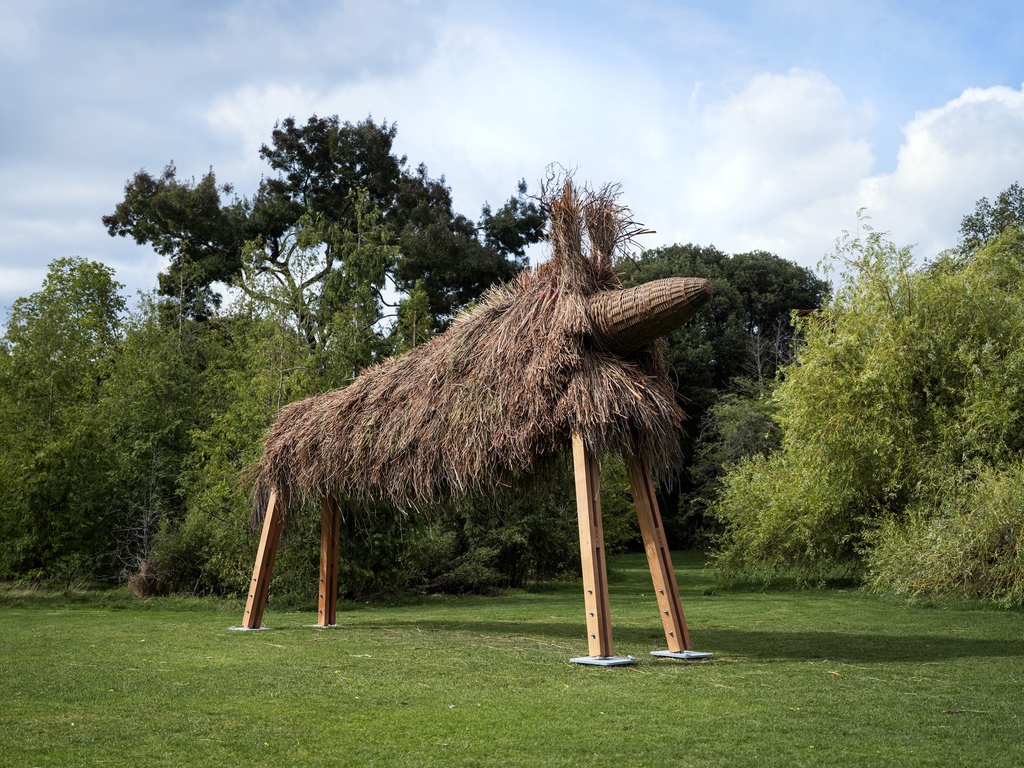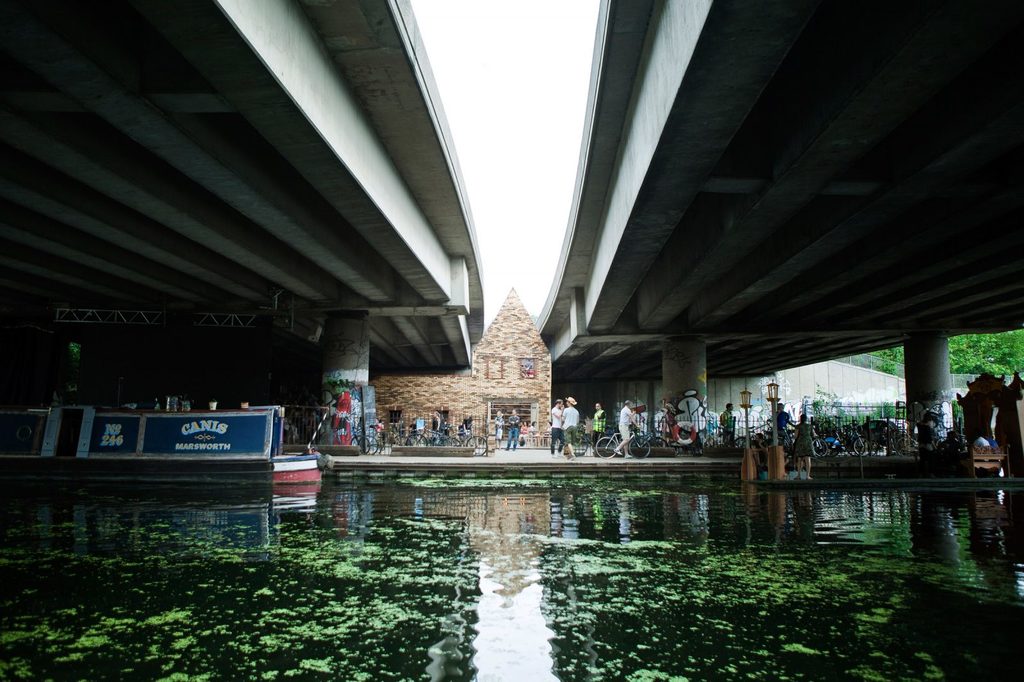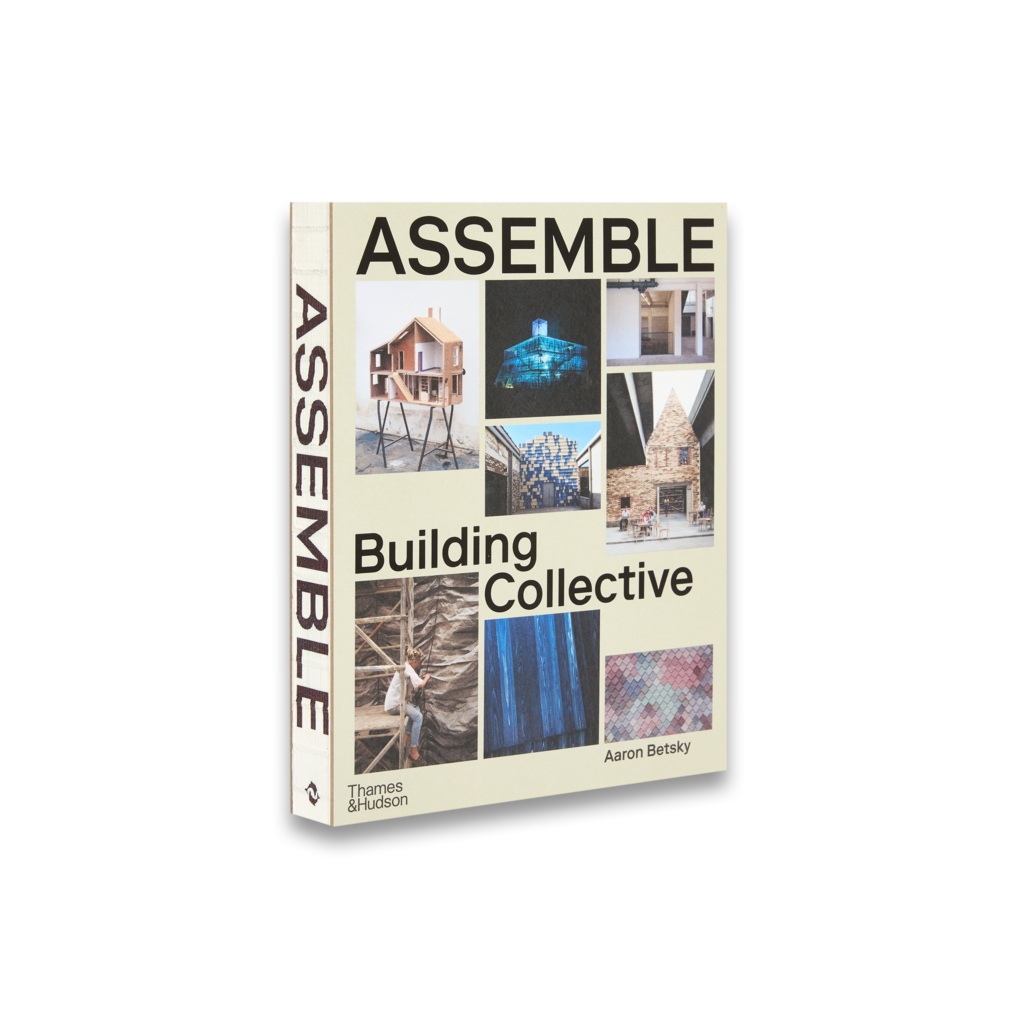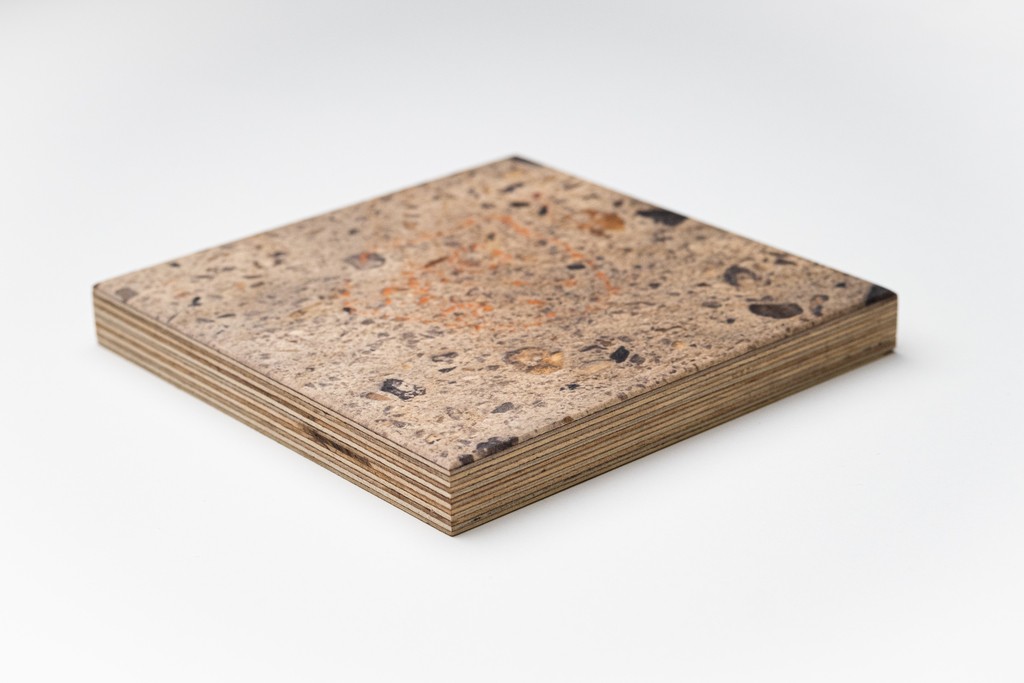Straw Dogs
Assemble Make Folklore
By Sammi Gale
You come upon Assemble’s Fibredog (2025) almost by accident, if you cut across Regent’s Park from the north toward the southeastern edge: standing on tall stiltlike legs, as though standing guard over this year’s Frieze Sculpture Park, its pelt is sedge grass thatch, sharp as wire; its nose, a woven basket. You can’t decide whether to fear being roasted alive inside it — sacrificed by fire to someone else’s obscure gods, like Edward Woodward in The Wicker Man (1973) — or to duck beneath its belly during a rain shower, into the safety of a den. The ambiguity is essential.
A decade ago, when the collective won the Turner Prize, juror Alistair Hudson situated them in ‘a long tradition of art working in society.’ Hudson, an advocate of ‘useful art,’ has long championed works that serve communities rather than galleries. Assemble, for their part, have always seemed to prefer a wheelbarrow over a white cube and practicality over the pretensions of the private view. Fibredog has all the trappings of utility – it could be a simple pavilion with a thatched roof – and yet is decidedly figurative.
"its pelt is sedge grass thatch, sharp as wire; its nose, a woven basket"

Assemble, Fibredog, 2025, presented by Plinth. Frieze Sculpture 2025. Photo by Linda Nylind. Courtesy of Frieze.
As such, Fibredog underscores another side of the collective’s practice: play – or even playacting. Too often typecast as earnest social engineers, Assemble have always harboured a streak of mischief. Folly for a Flyover (2011), commissioned by Create London, transformed a disused motorway undercroft in Hackney Wick into an arts venue and public space. The accompanying ‘fairy tale’ described the Folly as the home of a stubborn landlord who refused to move to make way for the motorway; the road was built around him, leaving his pitched roof trapped between the east- and westbound lanes. The Cineroleum (2010) was a pop-up cinema in a disused petrol station, where luxuriously ruched, hand-sewn swaths of roofing membrane separated the audience from the street, sealing off and unveiling the outside world as it rose and fell.

Assemble, Folly for a Flyover, 2011 © David Vintiner
Beyond this, Assemble’s taste for the theatrical has extended to a temporary theatre in Chichester (Theatre on the Fly, 2012); a collaboration with The Estate of Barry Flanagan and Plinth last year, recreating a long-lost Flanagan film in a durational performance (Barry Flanagan. the works (2024)); and now inaugurating Frieze Sculpture Park with a wassailing ceremony. With a wink to folk horror films such as Midsommar (2019), it conjures seasonal ritual, equal parts menace and festivity, toying with the idea of collective as cult. Society, after all, remains fascinated with the very idea of the collective, a nonconformist way of working under the relentless pressures of our late capitalist era — something addressed by architecture critic Aaron Betsky in his book-length monograph on Assemble, exploring the group’s many projects over the last fifteen years.

"braiding ancient rituals of harvest and ecstasy with the modern ritual of neon-and-PVC club culture, as village fête meets music festival."
Certainly, a throughline over the last decade and a half has been Assemble’s interest in experimenting with local and low-cost materials — see: rendering Dalston’s experimental project space and venue OTOProjects with rubble from a nearby demolition site in 2013. The original concept for Fibredog had a similar something-from-nothing spirit. A response to ‘a decapitated tree springing new life from its stump’, the proposal was for ‘a large-scale figurative statue made of wood, twigs, straw, foliage, debris — the materials of the park — pitched by a crowd and tied, bound and woven together.’
Enlisting master thatcher Mark Harrington and professional basketmaker Mollie McMillen, Assemble produced a creature that revels in fibre’s many guises: rough, pliant, durable, lush. The title, and the inclusion of LED straps, are a nod to Cyberdog in nearby Camden, braiding ancient rituals of harvest and ecstasy with the modern ritual of neon-and-PVC club culture, as village fête meets music festival.
Assemble constantly experiments with materials, but the commitment to creating and sustaining spaces for others to live, make, and create lies at the heart of their work. Their practice, in this sense, resembles the wish for ten more wishes: not the thing itself, but the framework that allows things to happen. Their workshops in south and east London have become ecologies of practice in themselves: wood, metal, brick, clay, and, at present, even a DIY sauna outfit. More myth than manual, Fibredog leaves space, or perhaps claims it, for viewers to imagine their own ceremonies: a picnic, a gathering, or something more neopagan.

Detail from Assemble, Material Sketches
"the commitment to creating and sustaining spaces for others to live, make, and create lies at the heart of their work. Their practice, in this sense, resembles the wish for ten more wishes: not the thing itself, but the framework that allows things to happen"
This year’s Frieze Sculpture Park, for the first time, carries an overarching theme: In the Shadows. Curator Fatoş Üstek insists the title is not ominous, but generative. ‘The works address ecological vulnerability, historical erasure, and human transformation,’ she explains. ‘My hope is that visitors see that what resides in the shadows may contain the seeds of change.’ Assemble’s response is both apt and oblique: the dog looms like a guardian spirit, but its shadow is ambiguous — protective or threatening, den or pyre. It does not so much illuminate vulnerability or erasure as dramatise our ambivalence toward collectivity itself: safety in numbers, or danger in the melee.
Whether Fibredog carries such seeds remains to be seen, but it certainly represents a shift in Assemble’s practice. I admit bias — the work is presented by Plinth — but the sculpture makes a claim. What if, as one of the collective suggested, Fibredog is more fox than wolf? If so, it could be a self-portrait: Assemble are nothing if not urban tricksters — resourceful, playful, cunning enough to twist the city’s offcuts into new grounds for conviviality. What does it mean to be wilier than the forces of disinvestment, gentler than the logic of profit, more stubborn than the motorway? It means to survive, yes. But also to imagine.